Everything about Sistan and Baluchestan – Iran
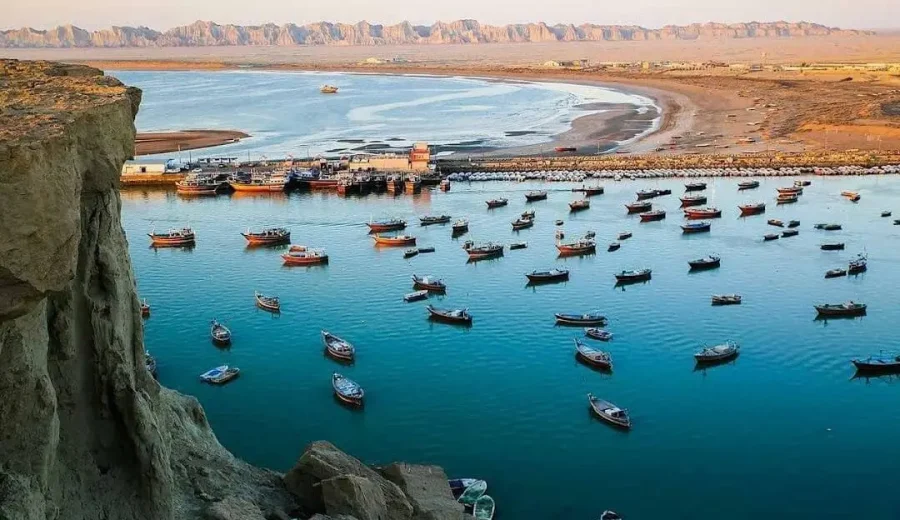
- Negin Masihi
- 11 August 2025
- Iran
- 4 minutes
Geography of Sistan and Baluchestan Province
Sistan and Baluchestan, Iran’s largest province, covers approximately 187,502 km², located between 25°3’–31°27′ N and 58°50’–63°21′ E, and is one of the least densely populated provinces. Moreover, it consists of Sistan and Baluchestan regions, bordered by South Khorasan and Afghanistan to the north, Pakistan and Afghanistan to the east, the Oman Sea to the south, and Kerman and Hormozgan to the west.
Northern Sistan, shaped by the Hirmand River’s alluvial deposits, hosts the world’s largest freshwater lake. Mount Khajeh, a culturally significant hill, stands out in the flat landscape. The region’s desert climate receives less than 65 mm of annual rainfall, with evaporation exceeding 5,000 mm.
The Oman Sea and monsoon winds influence Southern Baluchestan, with its mountainous terrain, resulting in high average temperatures and low fluctuations. The Taftan volcano, at 3,941 meters, creates diverse climatic conditions.
Related articles: khorramaabad
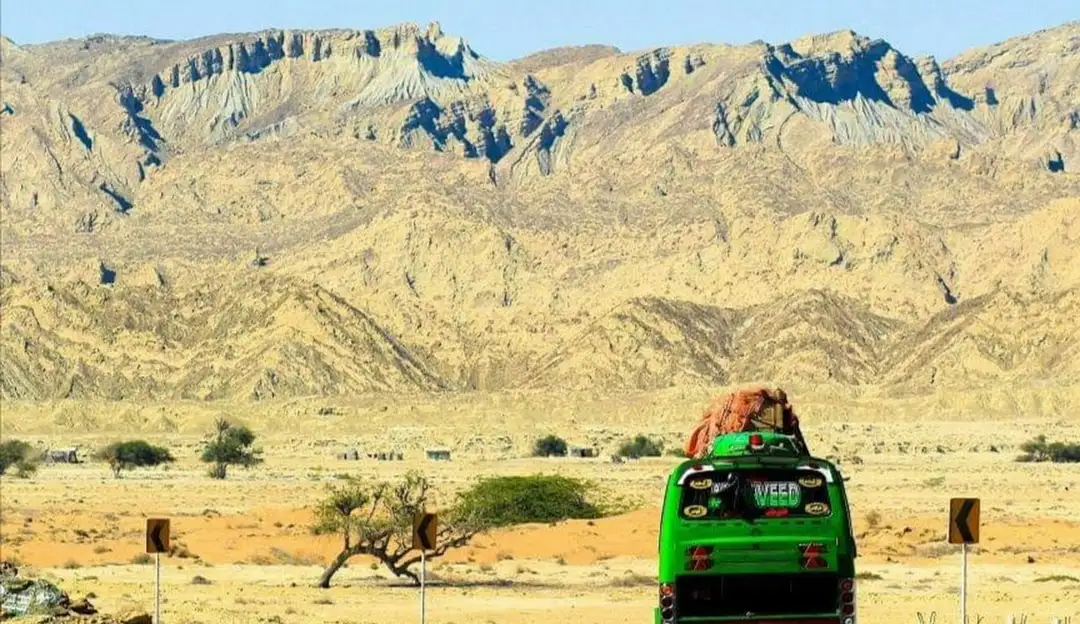
Makran desert
Agriculture in Sistan and Baluchestan Province
Sistan and Baluchestan Province, with its favorable climate, supports year-round agriculture.
- Saravan: A hub for date production, particularly Mazafati dates, with 60 varieties. Other crops include wheat, barley, pomegranates, grapes, rice, oranges, lemons, and tomatoes.
- Chabahar: Orchard crops include bananas, mangoes, chikoos, lemons, guavas, and Indian jujubes; field crops include vegetables, greens, and melons. Coconuts and papaya are also grown.
- Mirjaveh: In Rig Malek and Central sections, crops like wheat, barley, corn, alfalfa, and dates dominate. In Ladiz, farmers produce diverse crops such as wheat, barley, corn, alfalfa, canola, onions, tomatoes, legumes, melons, and cold-climate fruits (apricots, plums, peaches, nectarines, walnuts, almonds, sour cherries, cherries, barberries, mulberries, and blackberries) thanks to the milder climate and water resources.
- Fenoj: Crops include dates, citrus fruits, grapes, pomegranates, alfalfa, legumes, tobacco, and rice. Unique plants like aloe vera (shaglam) and moringa (gaz oil tree) are also found.
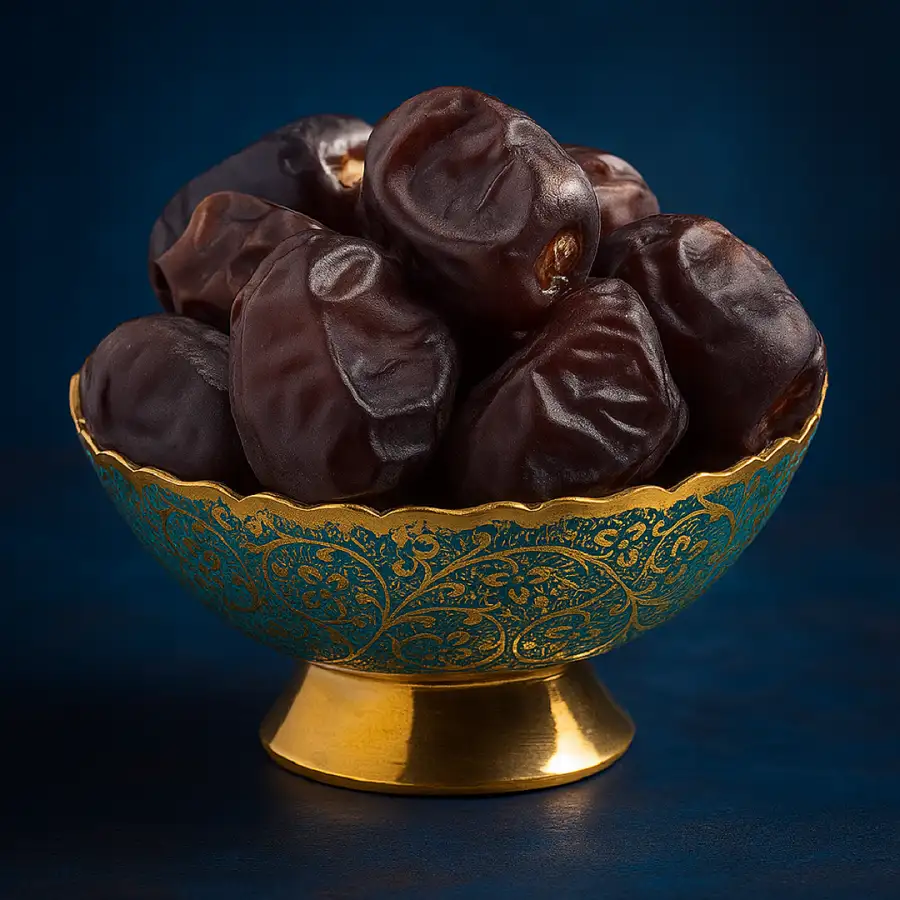
Mazafati dates
Natural Attractions in Sistan and Baluchestan
The Oman Sea and Makran Coastline
Stretching along the southern edge of Sistan and Baluchestan, the Oman Sea and the Makran Coast offer some of the most untouched beaches in Iran. In addition, from rocky cliffs in Tang to the sandy shores of Pasabandar and the breathtaking fishing village of Beris, this coastline is perfect for photography, boating, and beach walks. The dramatic sunsets here are unforgettable, making it a must-visit for nature lovers.
Martian Mountains (Kalani Mountains near Chabahar)
Located near Chabahar, these surreal Martian Mountains (Kuhā-ye Mārsi) look like they belong on another planet. Their sharp ridges and greyish-white colors create a unique, otherworldly landscape that attracts photographers, geology enthusiasts, and adventure travelers alike.
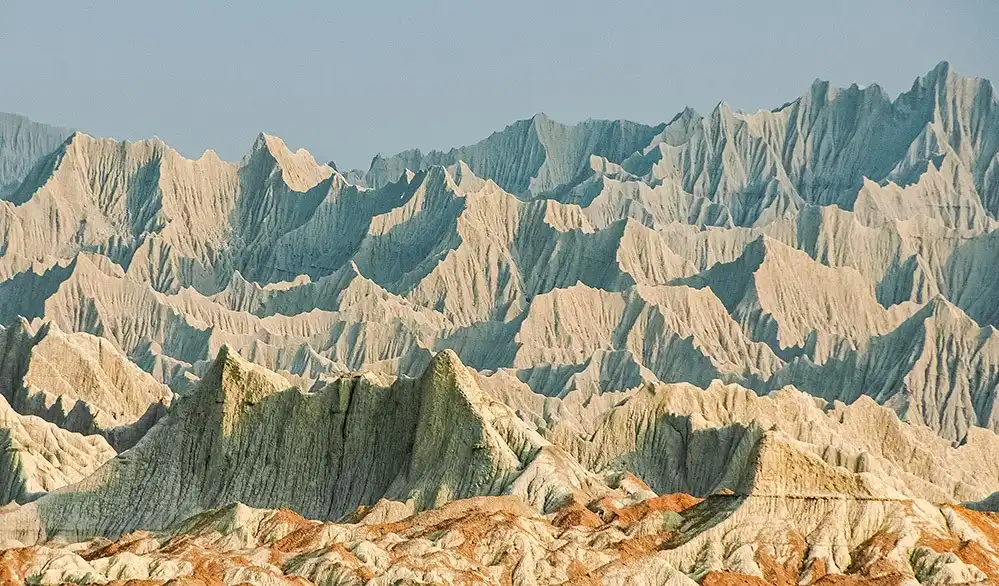
Martian Mountains
Hamun Wetland
The Hamun Wetland is a paradise for birdwatchers. It serves as a seasonal home for migratory birds such as flamingos, pelicans, and herons. Visitors can explore by boat or enjoy peaceful walks along the shoreline while spotting rare wildlife.
Derak Beach in Chabahar
Derak Beach in Chabahar is a stunning coastal spot known for its crystal-clear turquoise waters and pristine sandy shores. Moreover, Surrounded by natural beauty, it offers a peaceful escape where visitors can relax, swim, and enjoy breathtaking sunsets over the Arabian Sea. The beach’s unique landscape and tranquil atmosphere make it a hidden gem in southern Iran.
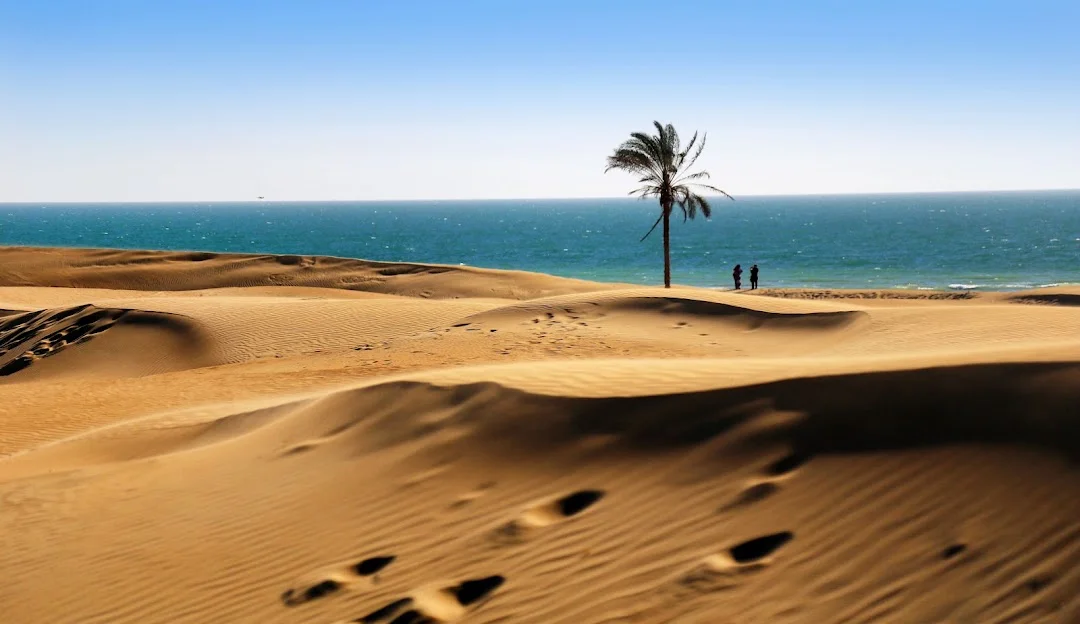
Darak Beach
Caves
This cave has gradually formed over time due to the dissolution and oxidation of rocks. The mountain contains numerous holes, many of which pass all the way through from one side to the other, creating tunnel-like passages from the summit down to the base. In addition, Climbing this mountain does not require mountaineering equipment, and it features a large sheltered rest area.
Eastern Lut Desert and Sand Dunes
The Eastern Lut Desert in the north of the province features vast sand dunes and mesmerizing desert landscapes. Ideal for desert trekking, off-road driving, and stargazing, this UNESCO-recognized desert offers a true sense of wilderness.
Historical and Cultural Attractions
- Shahr-e Sukhteh (Burnt City)
A UNESCO World Heritage Site, the Burnt City dates back over 5,000 years and is one of the most important archaeological sites in Iran. Excavations have revealed advanced urban planning, ancient artifacts, and even the world’s oldest known artificial eye.
- Ancient Fortresses
The province is dotted with ancient fortresses, including the Naseri Castle in Iranshahr and Bampur Castle, both offering glimpses into the region’s rich history and strategic importance.
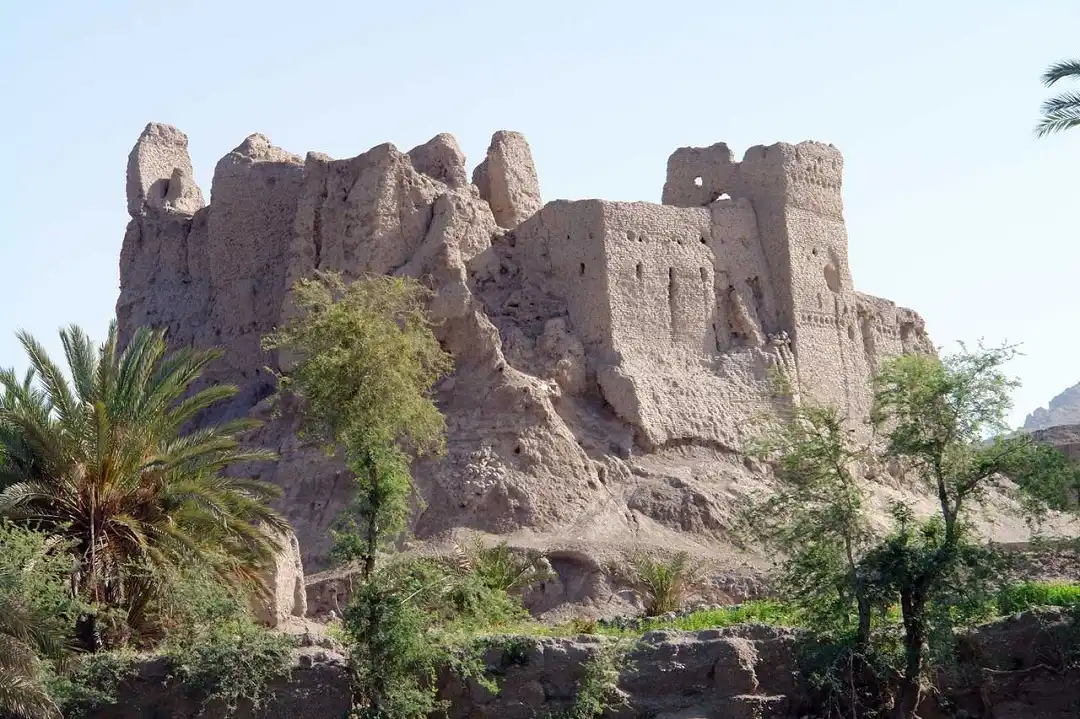
Ancient Fortresses
- Traditional Ceremonies
Culture and People
- The language Balochi is the main language of the Baloch people in the province. In Sistan, Persian and local Persian dialects are mostly spoken.
- Balochi Hospitality
The people of Sistan and Baluchestan are famous for their warm hospitality. Visitors are often welcomed like family, offered tea, and invited to share meals.
- Traditional Clothing and Balochi Embroidery
Balochi clothing is known for its bright colors and intricate needlework, especially in women’s dresses. The embroidery patterns are unique to each region and often tell a story.
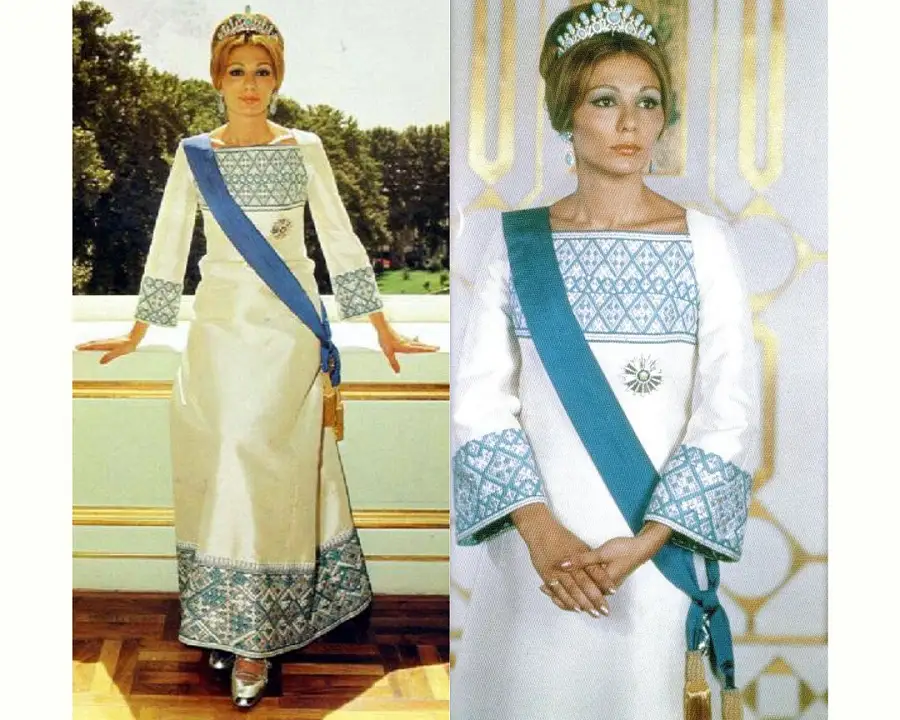
One of the most famous embroidered dresses of the Shahbanu was a fusion of traditional Iranian fabrics and modern design, inspired by Iran’s handicrafts and the unique vision of Keyvan Khosrowani. A group of Baluchi artisans embroidered this dress, using blue and gold threads — pure silk and gold thread — instead of the common embroidery colors of that era (black and red), which gave the dress its brilliance and timeless elegance.
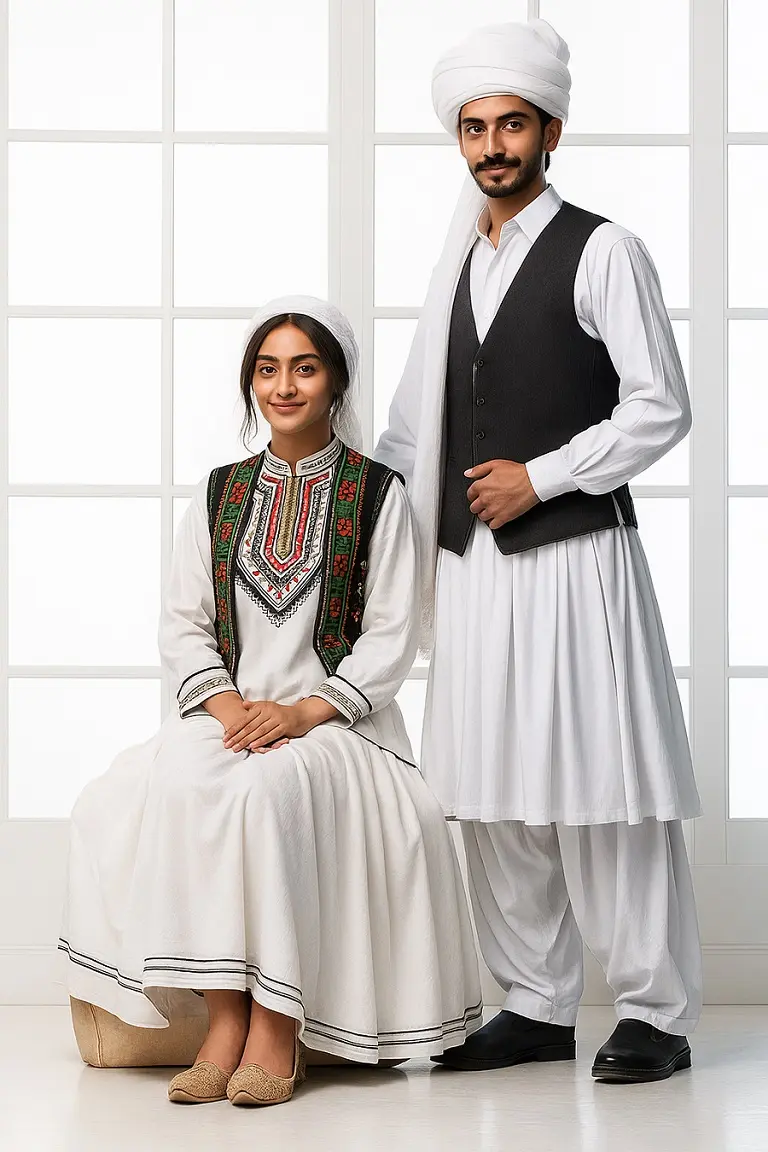
Baluch clothing
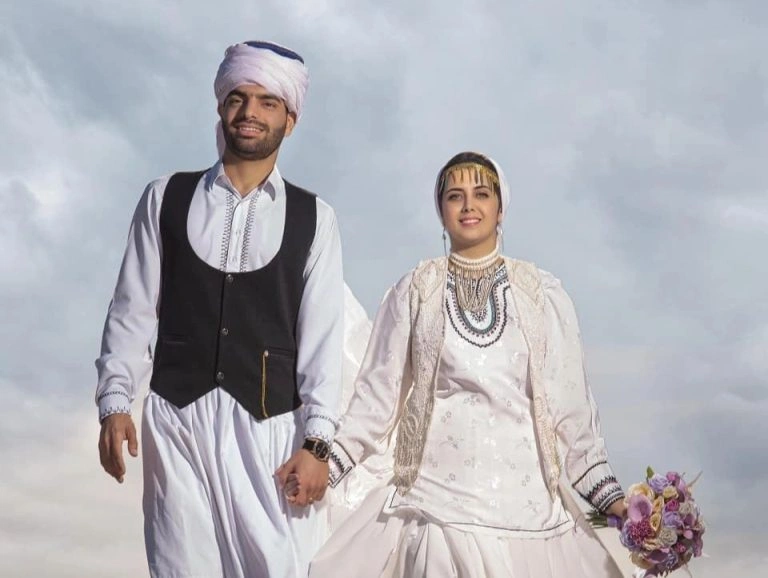
Baluch clothing
You might also enjoy: Persian wedding
Traditional foods
- Tabahag: One of the traditional dishes of Balochistan, made from salted meat and sometimes sun-dried meat. The meat is seasoned with salt and sometimes spices and animal fat (tail fat), then either slowly cooked over a fire or fried.
- Tanurcheh: This dish is made from fresh meat, usually lamb. The meat is seasoned and slowly cooked over a fire or inside a clay oven (tanur) until it becomes tender, juicy, and flavorful.
- Lenjo | Fish Stew: Fish cooked in water is called Lenjo.
- Pakora: Chickpea flour, sliced potatoes or eggplant, onion, fresh coriander, green chili, salt, curry powder or turmeric, cumin.
- Saffron Rice Pilaf: This dish is made with various nuts such as pistachios and almonds, red meat or chicken, and of course saffron rice.
Souvenirs of Sistan and Baluchestan
Balochi rugs and kilims — Handwoven carpets and kilims with unique patterns and beautiful colors.
Balochi embroidery — Fabrics decorated with very delicate and colorful hand stitching.
Sistan dates and rock candy — Delicious dates and local rock candy.
Silver jewelry — Traditional silver jewelry handcrafted especially by Baluchi women.
Handmade wooden and metal products — Such as boxes and decorative items.
Local spices — Special spices used in traditional dishes.








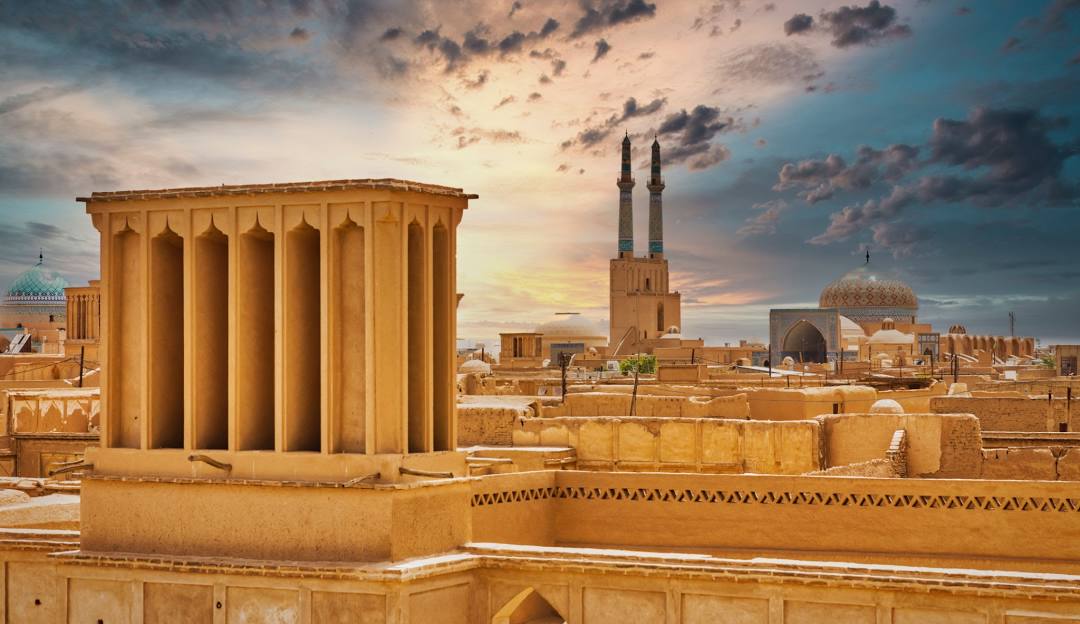

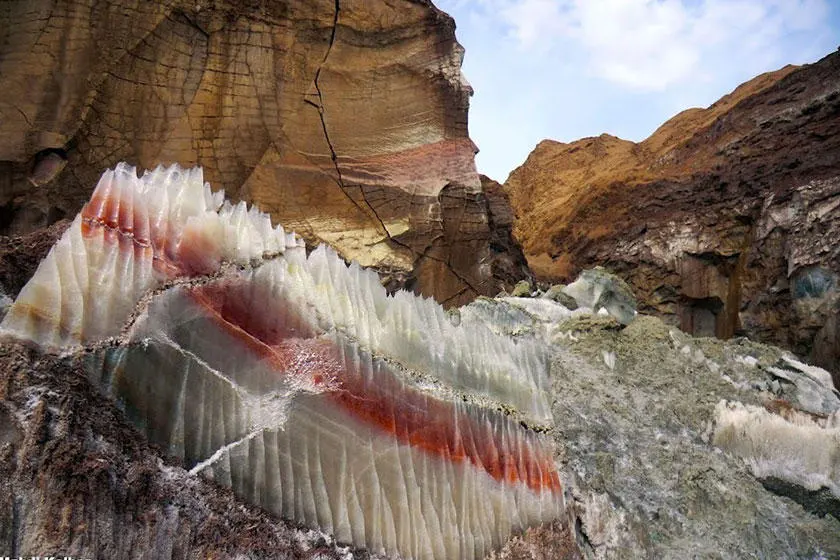
Comments